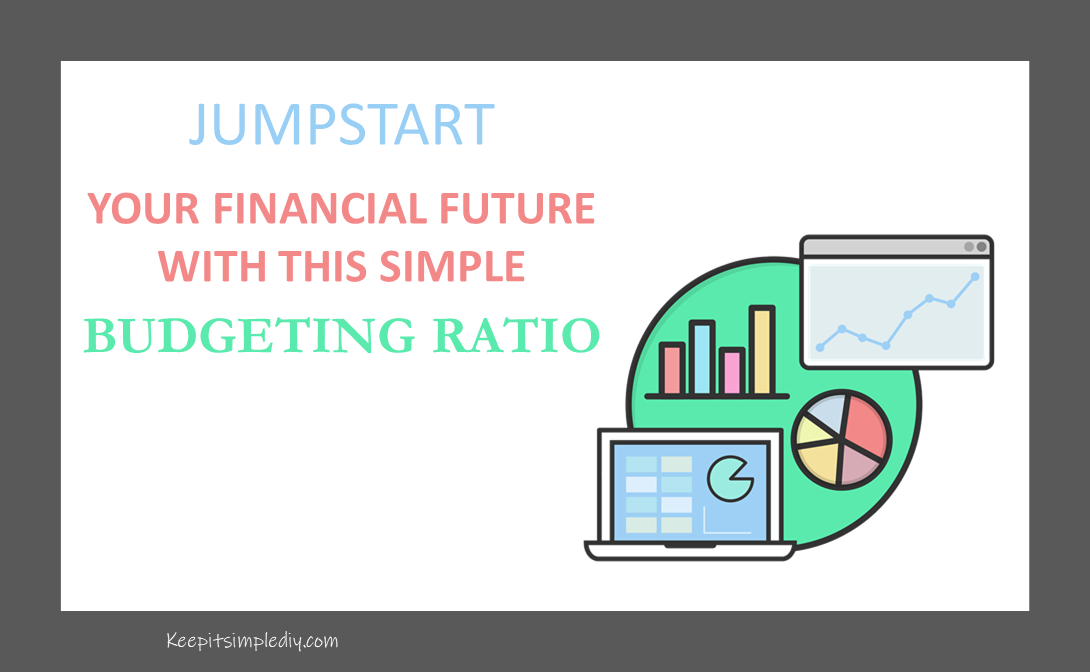This is possibly not a new concept to you but there are two main things that you can do with money. You can save it or you can spend it. Now you also may have heard this explained as three things to do, save, spend, and give. But I see giving as a way of spending money. You spend your money on someone else. Now let’s jump right in to the budgeting ratio!

Let’s start by defining a ratio: A ratio is a comparison of two or more numbers that indicates their sizes in relation to each other.
We will be comparing the percentage of spending and the percentage of saving. We are using percentages because we want the logic to remain constant even when your income changes.
The Income Behind Your Budgeting Ratio
Before we dive into the ratio, we need to talk about your monthly net income. Your net income is the amount of money you receive after taxes have been taken out. For the remainder of the post, we will be working with the net income.
Calculate your monthly net income by adding the amounts from each of your paycheck for the month. If your paychecks vary, it’s best to add up the paychecks from multiple months then divide by the amount of months you added to get the average net income out of those three months. Note your monthly net income for future reference.
Now, let’s do the same thing for your spending. Add up your expenses for the month or take an average of multiple months. Note this amount as well.
Now that you know your monthly income and your monthly expenses, let’s calculate your starting ratio.
Calculating Your First Ratio
To calculate your starting ratio, start by finding what percent of your monthly income you spend. To do this, take your monthly expenses and divide them by your monthly income. Multiply this number by 100 to convert the number to a percentage.
Monthly Expenses / Monthly Income * 100 = Spending %
Subtract your spending percentage from 100 to get your saving percentage.
100 - Spending % = Saving %
Now note spending percentage vs your saving percentage. This is your current ratio!
Spending % : Saving % = Your Current Ratio
Now for fun, use the slider on the scale
But Which Budgeting Ratio is the Right One?
It’s pretty common to see a 70% Spending : 30% Saving ratio noted as standard but does that mean this is the right ratio for you? I’d say not necessarily. There is no one size fits all to budgeting. Budgeting is also a moving scale. What is right for you currently may not be what’s right for you in the future.
It’s pretty common to see a 70% Spending : 30% Saving ratio noted as standard but does that mean this is the right ratio for you? I’d say not necessarily. There is no one size fits all to budgeting. Budgeting is also a moving scale. What is right for you currently may not be what’s right for you in the future.
The only wrong way to budget is to not budget at all.
So which budgeting ratio is the right one? Let’s start by reviewing your current ratio. The right ratio for you is a ratio that shows improvement. At the end of the day, the best we can do is work towards getting better. And what does better mean?
Better could mean that you need to work towards moving the needle to the left and start saving more. Better could also mean that you need to work towards moving the needle to the right and spending more.
Determining which way you need to work the needle is something you need to determine when setting your budgeting goals. Make sure that your goals are actionable and attainable. For example: If you want to increase your monthly saving by 5%, write out how you plan to plan to do so.
At the end of the day, your budget is for you. Make it be what you want it to be and always challenge yourself to do better.








